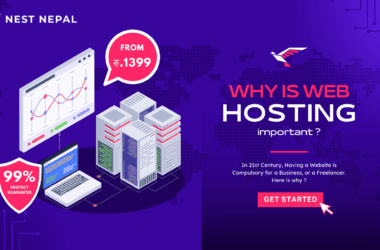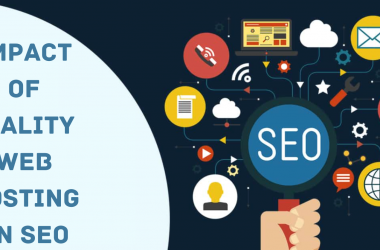So, you’re ready to launch your first website. Maybe it’s a blog, an online store, a portfolio, or the next big thing. But there’s one big decision standing between you and the internet: choosing the right hosting plan.
And here’s the truth: your hosting plan can make or break your site. Pick wrong, and you’re stuck with slow speeds, confusing settings, and zero support when things go sideways. But pick right? You get peace of mind, blazing performance, and a smooth ride from day one.

This guide will walk you through everything you need to know to pick your first hosting plan with no regrets, no tech confusion, and no money down the drain.
First, What Exactly is Hosting?
Think of hosting like renting space on the internet. Your website’s code, content, and media need a home. A hosting provider gives you that home on their servers, so your site is accessible to anyone, anywhere, 24/7.
But not all hosting homes are built the same.
Some are fast, secure, and reliable. Others are… let’s just say you’d rather not move in.
Step 1: Know What Type of Hosting You Actually Need
Before you sign up for anything, understand the four most common types of hosting:
1. Shared Hosting – Cheap and Easy

Your site shares a server with others. It’s affordable and beginner-friendly, but can be slower if other sites on the same server get busy.
Best for: Blogs, personal sites, small businesses starting out
2. VPS Hosting – More Power, More Control

Virtual Private Server hosting splits a server into private spaces. It offers better speed and reliability than shared, with more flexibility.
Best for: Growing websites, devs, or anyone needing better performance
3. Cloud Hosting – Scalable and Resilient

Resources are spread across multiple servers. Great for handling traffic spikes without crashing.
Best for: Startups, ecommerce, or anyone planning to scale fast
4. Dedicated Hosting – All Yours

You rent an entire physical server. It’s powerful, customizable, and expensive.
Best for: High-traffic websites, large companies, apps needing high performance
Step 2: Look for These Key Features in a Hosting Plan
Not all hosting plans are created equal. Here’s what to actually look for:
1. Uptime Guarantee (Aim for 99.9 %+)
Downtime = lost visitors = lost trust. Good hosting keeps your site online, always.
2. Speed Optimization (NVMe SSDs, LiteSpeed, Caching)
Faster sites = better SEO, better user experience, and more conversions. Look for performance-enhancing tech like:
- NVMe SSD storage
- LiteSpeed servers
- Built-in caching or CDN
3. Free SSL Certificate
No SSL = “Not Secure” warning. That’s a trust killer. A free SSL should be non-negotiable.
4. Daily or Weekly Backups
Backups are your insurance policy. Make sure they’re automatic and easy to restore.
5. Easy Control Panel (Like cPanel or DirectAdmin)
You shouldn’t need a PhD to manage your hosting. Go for user-friendly dashboards.
6. 24/7 Support (With Real Humans)
You’ll need help eventually. Make sure support is fast, reliable, and available 24/7.
Step 3: Match Your Goals to the Right Plan
Your hosting needs depend on what kind of website you’re launching. Here’s a quick guide:
- Blog or Portfolio? → Shared Hosting or Basic Cloud Hosting
- Online Store? → VPS or Cloud Hosting with WooCommerce or Shopify support
- Business Website? → Shared or VPS, depending on traffic
- Web App or SaaS? → VPS, Cloud, or Dedicated
Don’t overpay for features you won’t use. But don’t cheap out on essentials like speed and security.
Step 4: Watch Out for Hidden Costs
That $1/month offer? It probably jumps to $10/month on renewal.
Look for these pricing traps:
- Low intro pricing that skyrockets later
- Extra fees for SSL, backups, or migrations
- Lock-in contracts without refunds
Pro tip: Always check renewal rates and refund policies.
Step 5: Choose a Host with Local or Reliable Global Presence
Speed isn’t just about your server, it’s also about where it’s located. Pick a host with:
- Data centers near your audience (or a CDN)
- Fast DNS resolution
- Solid international infrastructure
If you’re targeting a specific region, server location matters a lot.
Step 6: Plan for Growth (Even If You’re Just Starting)
Your site might be small now, but will it stay that way?
Make sure your hosting can handle:
- Traffic spikes
- Storage upgrades
- Scaling without downtime
Some hosts make upgrading hard (or expensive). Pick a flexible one.
Real Talk: What Most First-Timers Regret
Let’s be honest. Here’s what most people wish they knew before buying:
- “I should’ve checked the renewal cost.”
- “My site is slow, and support doesn’t care.”
- “Backups saved me, thank God they were included.”
- “Cheap hosting felt great until my site crashed during launch.”
Learn from these. Don’t repeat them.
Final Thoughts
Picking your first hosting plan is exciting, but don’t rush it. This is your site’s foundation. Get it right, and you’ll thank yourself later.
✅ Choose the right type (shared, VPS, cloud) based on your goals.
✅ Look for speed, support, backups, and real uptime.
✅ Avoid gimmicky pricing. Read the fine print.
✅ Think long-term, even if you’re starting small.
Your website deserves more than the cheapest hosting. It deserves the right hosting.
Need a hand picking your first plan? Nest Nepal’s friendly team is always here to help, no pressure, no sales tricks. Just good hosting advice from real people who’ve been there.
Let’s build something awesome.








